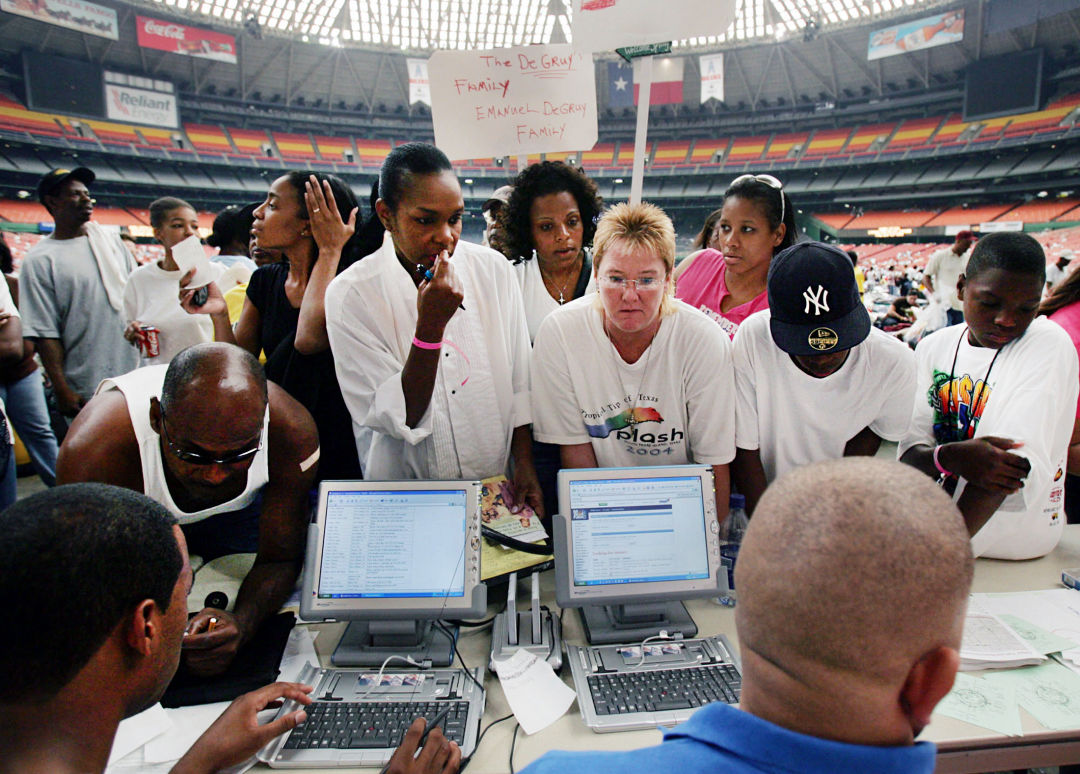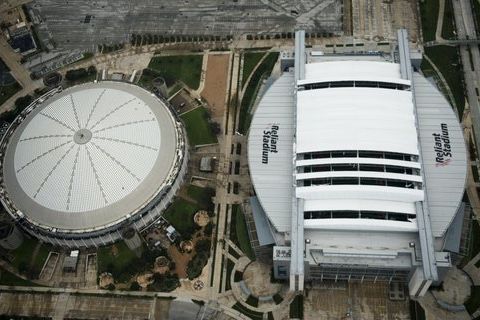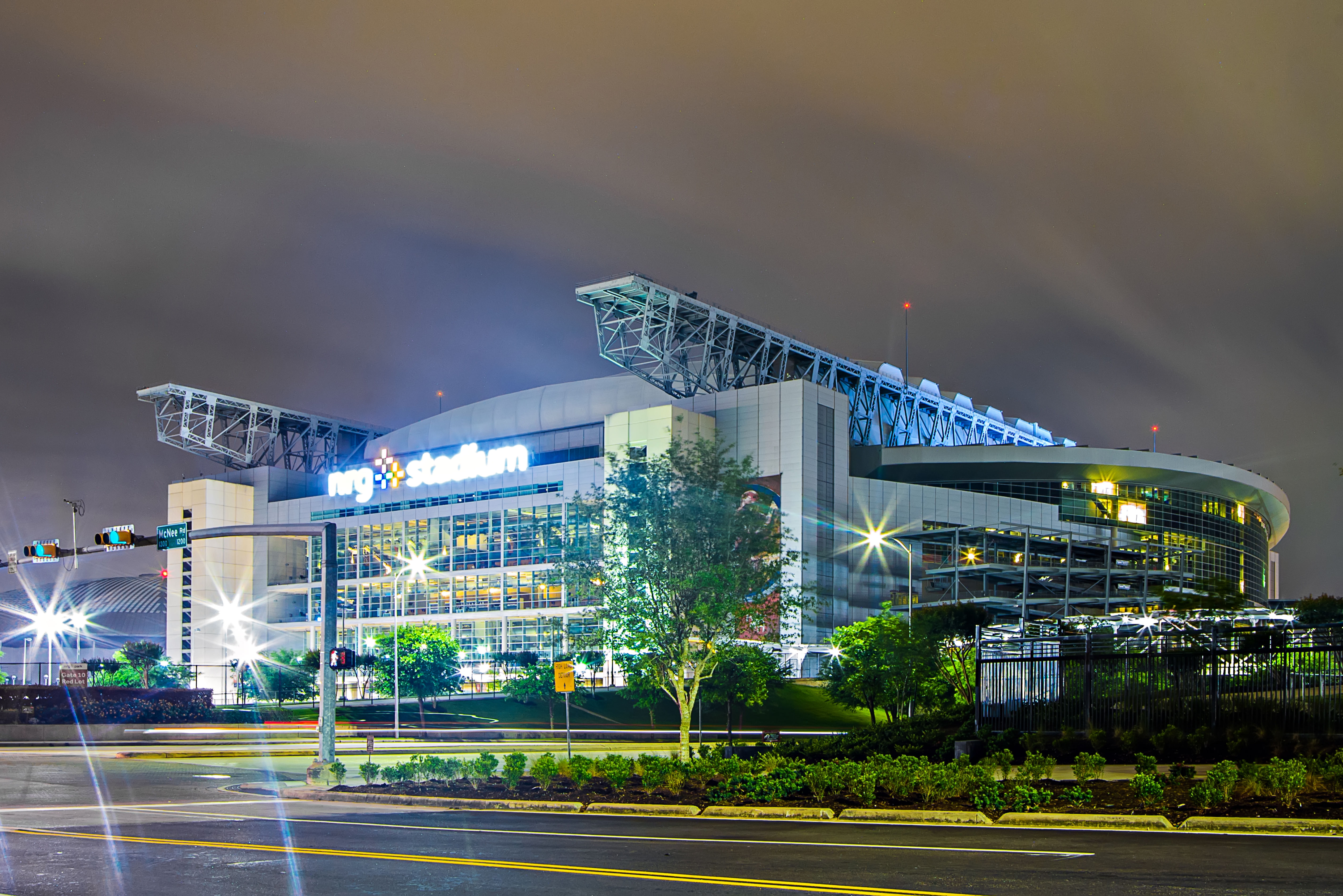When the Cowbell Rang: How Houston Helped Katrina Survivors Find Family

Image: AP Photo/NewsBase
Clank, clank, clank.
The sharp chime of a cowbell echoed through Houston’s Astrodome. For a beat, silence hung in the air—then cheers and tears erupted. Someone found their family, Janice Jucker remembers thinking.
“It was life-changing,” she says.
On August 29, 2005, Katrina made landfall in Buras-Triumph, Louisiana, 410 miles east of Houston. The Category 5 storm weakened to a Category 3 before unleashing a catastrophic surge that broke New Orleans’s levees, devastated the Gulf Coast, and killed nearly 1,400 people.
Those with resources—often wealthier and white—escaped in time, while many others, largely Black and many poor, had no way out. With little assistance from the government, more than 250,000 New Orleans residents were left behind, forced to ride out the storm and the ensuing flooding when the levees failed, only to be evacuated to Houston. “The people who came to Houston were not expecting to stay very long. They didn’t know what to do and had very few prospects,” recalls Rick Wilson, a professor emeritus of political science at Rice University who observed and assessed survivors in the aftermath as a part of his research.
For evacuees, finding a loved one amid the chaos was nothing short of a miracle. A cowbell came to symbolize something extraordinary: family, and the rare, miraculous reunions that took place in the Astrodome. No one quite remembers where the cowbell came from or how many times it rang, but Jucker says the sound still echoes in her memory.

Image: AP Photo/Pat Sullivan
Jucker, now a co-owner of Three Brothers Bakery, was then a salesperson at Avaya, a communications company. In an era before everyone had a smartphone (Apple’s iPhone debuted in 2007), she persuaded her employer to create a “people finder system" comprised of phone stations that would enable evacuees to locate family members at Houston shelters, including Astrodome and Reliant Center. Within 12 hours, major companies such as AT&T and Southwestern Bell delivered phone sets and coils of copper wire to build a large-scale phone system. IBM provided computers so evacuees could email relatives, and Jucker and several teams worked through the night, setting up cots, phone lines, and computer stations before busloads of Katrina survivors arrived.
That’s also when the cowbell in the Astrodome was born, Jucker says, and it rang every time the computer systems connected a family member to another. Even more people found each other through the phones, Jucker says. In one of the most memorable moments, a man approached her, asking for help to find his family. Originally from New Orleans, the man evacuated to Mississippi before Katrina hit, but his grandmother stayed behind. After cellular service was restored, he checked his phone and saw a voicemail from his grandmother, who said she was in a shelter in Houston. The man drove a roundabout route from Mississippi to get here and, upon arrival, wandered the Reliant complex to find her. Twenty minutes after asking Jucker for help, the man was face-to-face with his grandmother. “Watching his reunion with his family brought tears to my eyes,” Jucker says. “I had never seen such joy in someone’s eyes.”
The sound of the cowbell, she says, was music to her ears.
Houston steps up
Days before the storm’s landfall, then-Houston mayor Bill White was already bracing himself. “I’d get up very early every morning, check in with the National Hurricane Center on the computer,” White says. He knew that if the levees broke, “the water and power systems in New Orleans were going to be out, and out for a long time.” So, when the head of Shell USA first alerted the mayor that the levees had broken, White knew he had to act fast. He called a meeting with department heads and senior staff. They determined Houston, the closest city with major freeway access and infrastructure, was best positioned to host evacuees. What followed was a three-month sprint of 18-hour days. “We wanted people to be able to get on with their lives, so we improvised,” White says.
Step one was food, clothing, and shelter. White convened city leaders, canceled conventions at the George R. Brown and Reliant centers, and set up 16 Red Cross shelters across town. He tapped megachurches for volunteers, persuaded hotel and motel owners to open their doors, and leaned on Walmart’s supply chains. Step two was resettlement: White launched a voucher system, allowing Katrina survivors to transition from cots to furnished apartments. Step three was integration: Children were enrolled in Houston schools, while adults were connected to employment as soon as possible. “That was our goal, and it was much more efficient than our FEMA program,” White says.

Image: AP Photo/ LM Otero
While Houston adapted, FEMA faltered under the pressure of supporting a mass forced migration. White recalls halting FEMA’s plan to house evacuees on ocean liners—a solution he saw as isolating.
The larger failure, Wilson says, was cultural: FEMA treated families as nuclear units, ignoring the dense extended kinship networks that defined New Orleans life. Dozens of family members “would come in on the same bus or meet everyone then, and reunite,” Wilson says. He observed how siblings, parents, grandparents, cousins, aunts, uncles, and so on would claim space together in shelters, forming mini-communities of cots that surrounded their belongings, with some relatives keeping an eye out while others wandered off to find food and clothing.
Failure to understand the depth of these familial structures led to a breakdown in communication. Once the federal government and FEMA decided that shelter—semi-permanent housing—was the next-best solution, they began transporting survivors to motels, hotels, and apartments across Houston’s sprawling area. These nontraditional and far-reaching family webs quickly unraveled. “They didn’t ship them out in intact family units,” Wilson says, adding that many times, it was however many could fit into an available room. “It [was] a pretty tough time getting back together with one another. They didn’t have money or jobs. They were put into apartment complexes all over the city,” Wilson says. “People were terribly depressed, and many didn’t see a future.”
Wilson says the country and the federal government were doing the best they knew how, operating from their own understanding of family and safety. “It was coming from a good place,” he says. “It was just sort of misplaced do-gooderism.” In hindsight, and with more preparation and time, Wilson says it would have been helpful to have built an online registry for survivors to identify family members and friends.

Image: AP Photo/Pat Sullivan
Building a new life
Life inside Houston shelters took on its own rhythm. Survivors spent several weeks in limbo, cots clustered by parish or family. Evacuees began working alongside volunteers to build a sense of community. Anyone with a skill was an asset, Jucker says. Barbers set up shop in the Astrodome, and plumbers helped install showers and sinks. Displaced children—30,000 in all—filled Houston classrooms, prompting White to raise funds for more teachers’ assistants and tutors.
Over time, Louisianians integrated into Houston life. But not without tension: Crime rates rose, and police were quick to blame the newcomers. Still, many Houstonians rallied. The response led to changes in laws and regulations at the national level. The director of the city of New Orleans, who had been rescued from her rooftop, praised Houston’s resourcefulness. “She said that she expected to find chaos, but it was so organized,” White says. Another woman White met at a Black church noted that although she was a skeptic who had lived through the passage of the Voting Rights Act of 1965, Houston’s hospitality toward Black Louisianians made her hopeful that racist attitudes in America were finally changing. “Without any mention of race, they were just neighbors,” she told him.
The nation watched closely. Celebrities like Oprah Winfrey, Kobe Bryant, and a young Sen. Barack Obama visited Houston’s shelters. Kanye West’s sharp critique of President George W. Bush—“George Bush doesn’t care about Black people”—captured national anger, confusion, and frustration with the slow federal response. Bush, who was infamously on vacation for 27 days at his ranch in Crawford, Texas, delayed his visits to victims for weeks.
Through it all, though, Houston’s response became a blueprint for disaster relief. Jucker says she didn’t realize the scale of the “people finder” system until she picked up a copy of The New York Times on September 10, 2005, and saw a three-part photo series featuring Avaya’s phones, prominently displayed on the front page. The images showed a 9-year-old boy at the Reliant Center reconnecting with his mother over the phone for the first time since the storm (his mother was sheltering in Dallas)—a mixture of anxiety and relief showed on his and his siblings’ faces as volunteers looked on. Several shelters around the country soon followed Houston’s lead, implementing similar systems. “We became the model,” Jucker says.
As a result, policies shifted. The bond between Houston and New Orleans deepened, and White says a lesson, much like the clang of the cowbell, resounded: “We can’t control the weather. We can’t control [where] we’re born. Most of us can’t control when we leave this earth. But, we can control how we react to negative things, and this community really came together in a way that was remarkable.”
Clank, clank, clank.
With each rare reunion, the resounding cowbell also carried a lesson. Even in Katrina’s chaos, people kept searching for one another—a reminder that while there’s no place like home, it is nothing without family.
Editor’s note: This article has been updated to clarify that the cowbell was originally located at the Astrodome, where it was used to alert the shelter when a family had been reunited.




